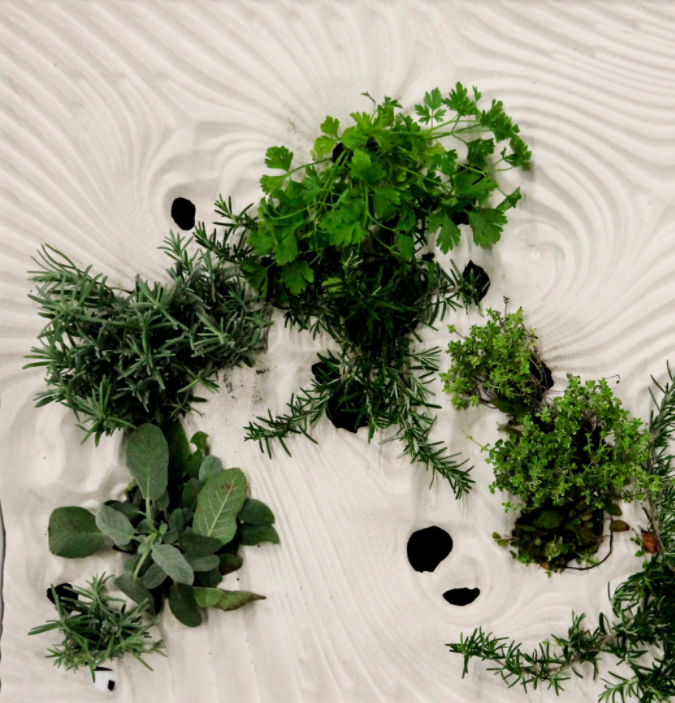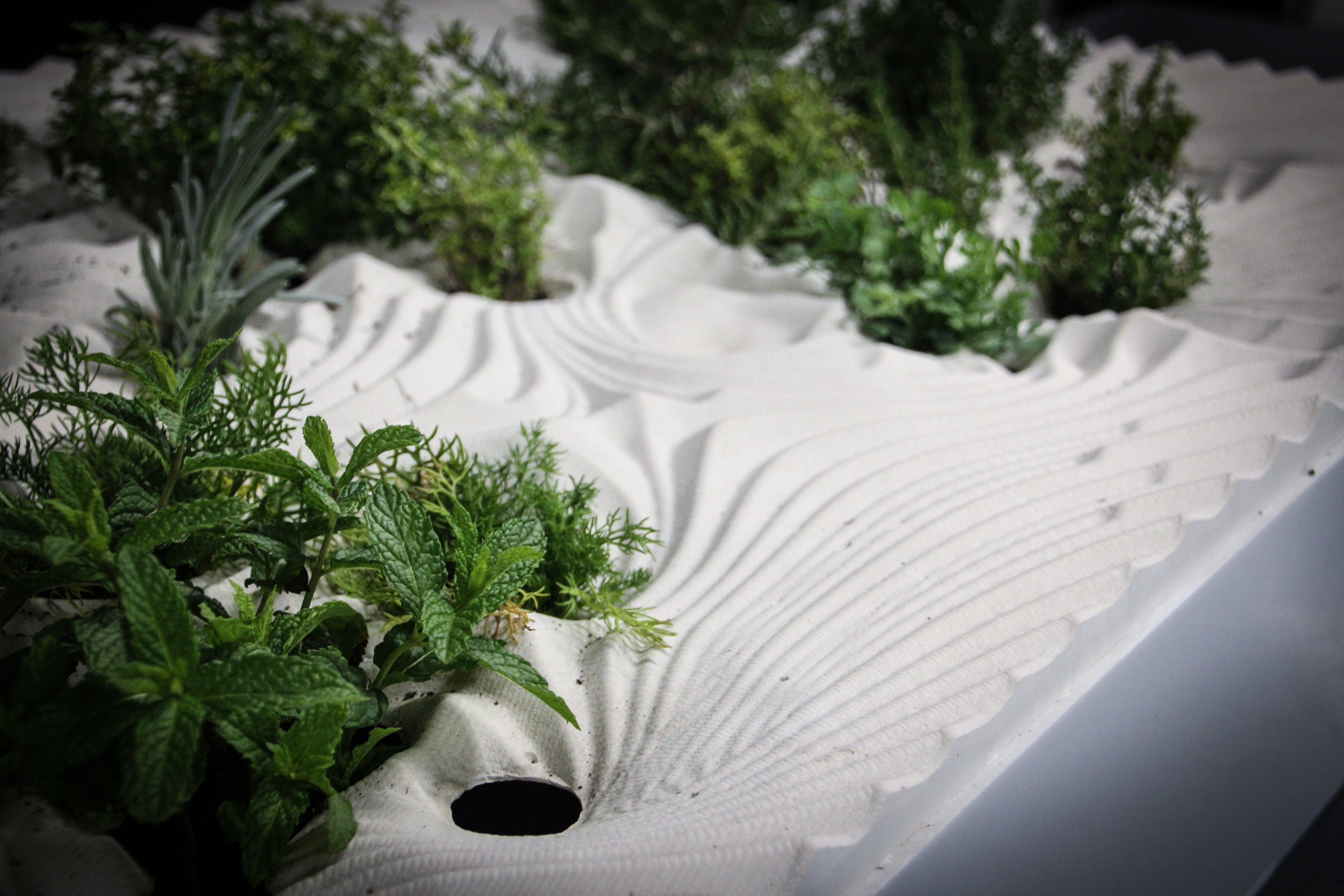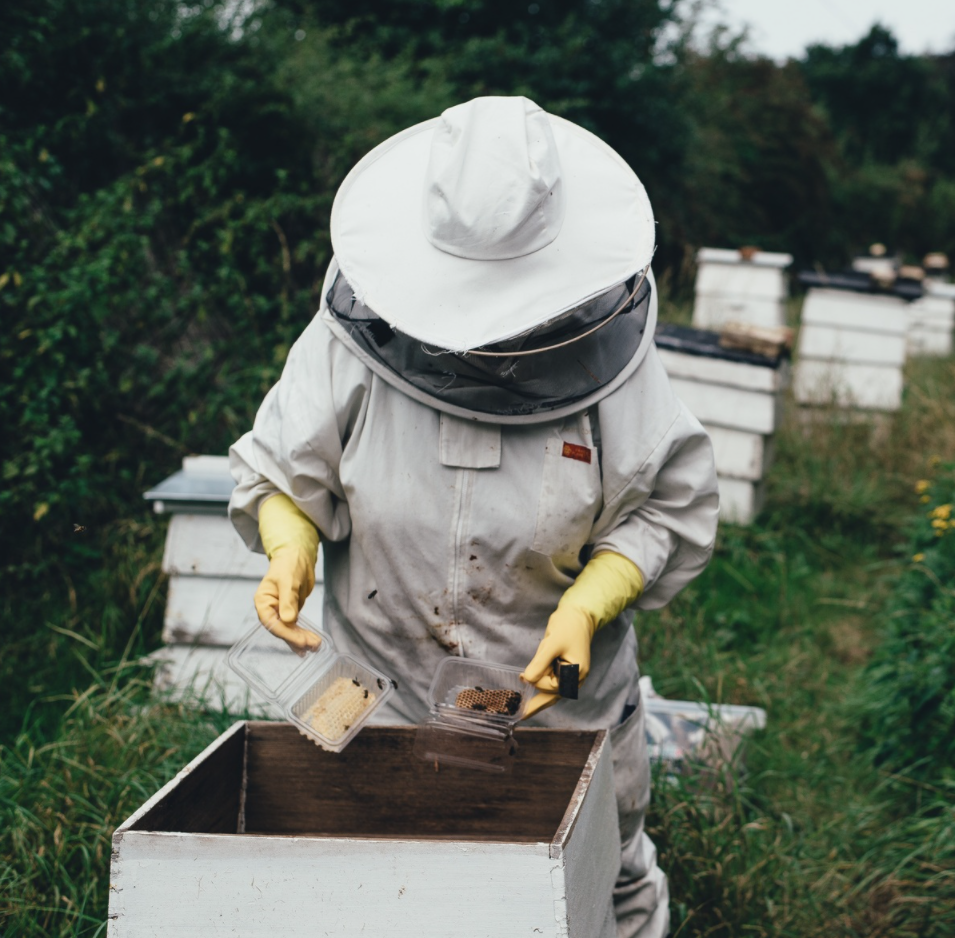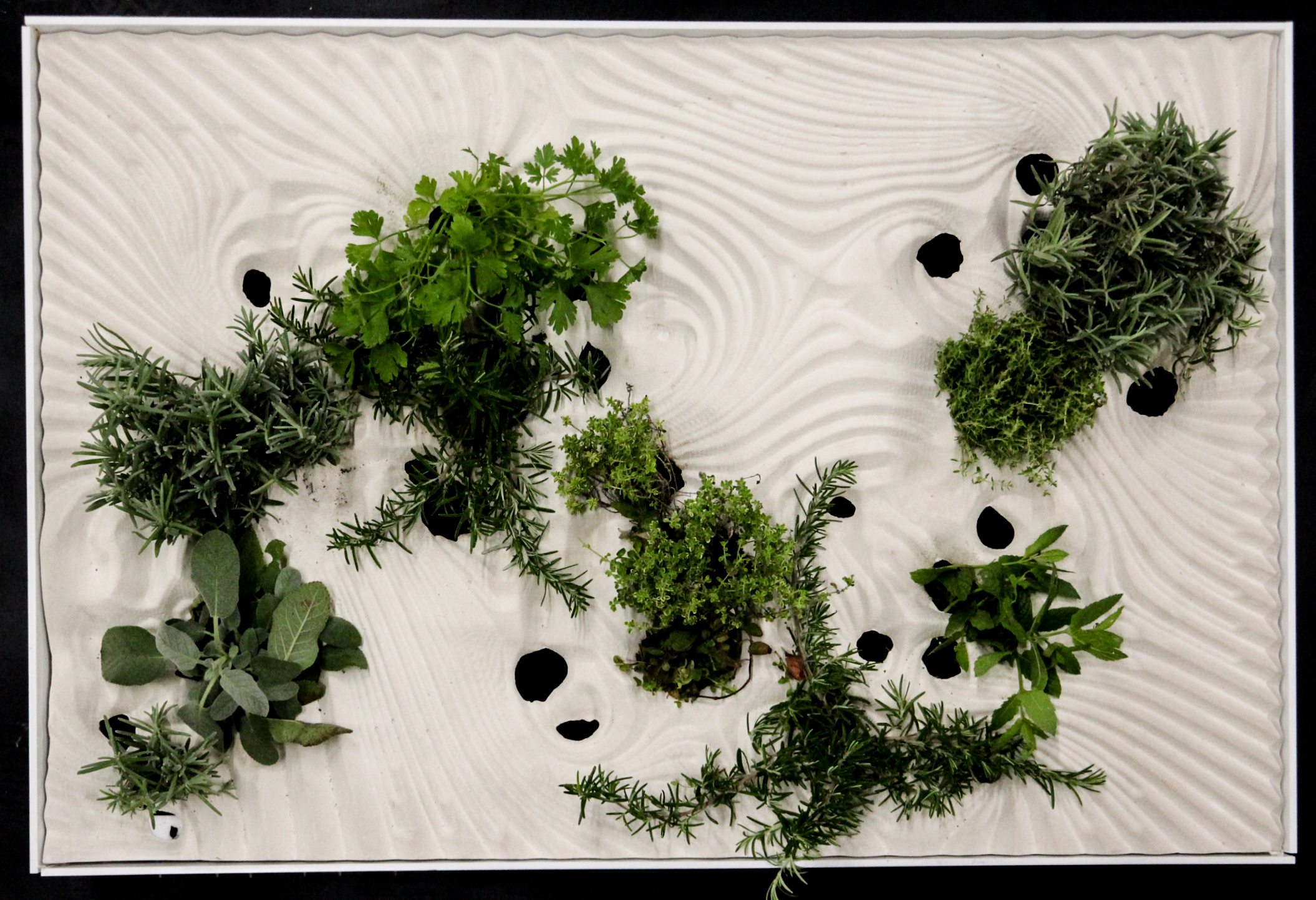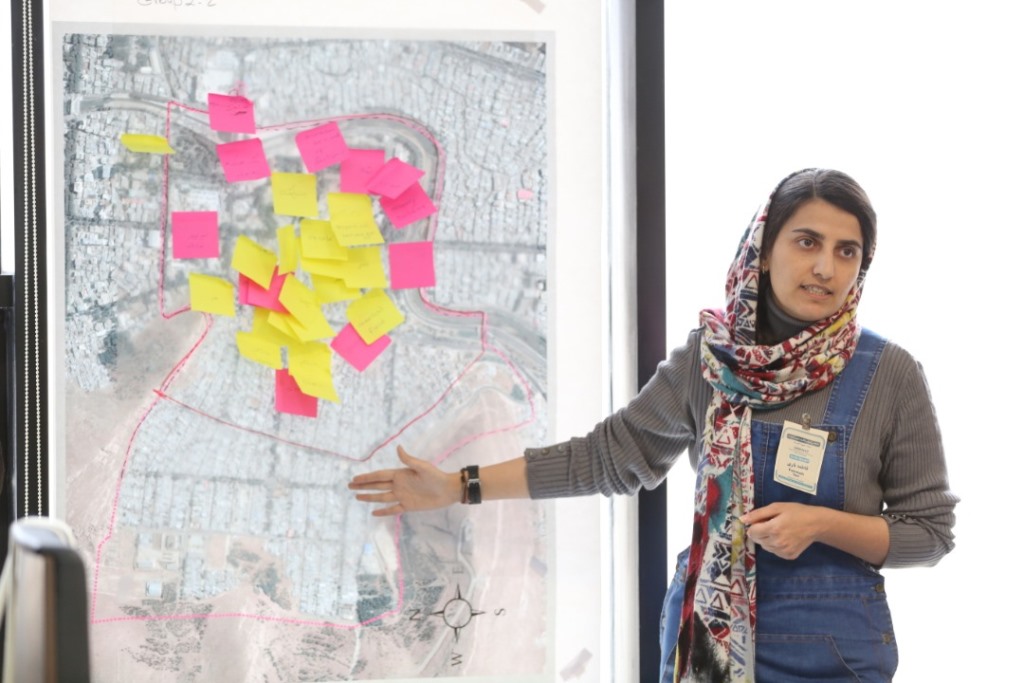Grow Tile
CHALLENGES ADDRESSED
Score impact
Nature
Wellbeing
Health
Mobility
Participation
Economy
DESCRIPTION
The Grow Tile can be implemented on horizontal or vertical surfaces and depending of the materials used for the surface, it can be walkable. It is targeted at creating optimal environmental conditions for plants to live in an urban environment and it is designed to minimize maintenance operations. The solution brings several environmental benefits, such as (1) flooding prevention by increasing permeable surfaces; (2) heat island alleviation; (3) air quality improvement; (4) water saving increasing. Depending on the plants implemented it can also be used for food production and pollination. The external surface is designed using parametric techniques that allow to adapt the shape to local climate conditions. For instance, in wet climates, the total area of the holes would be higher as more plants can be irrigated thanks to a higher water availability.
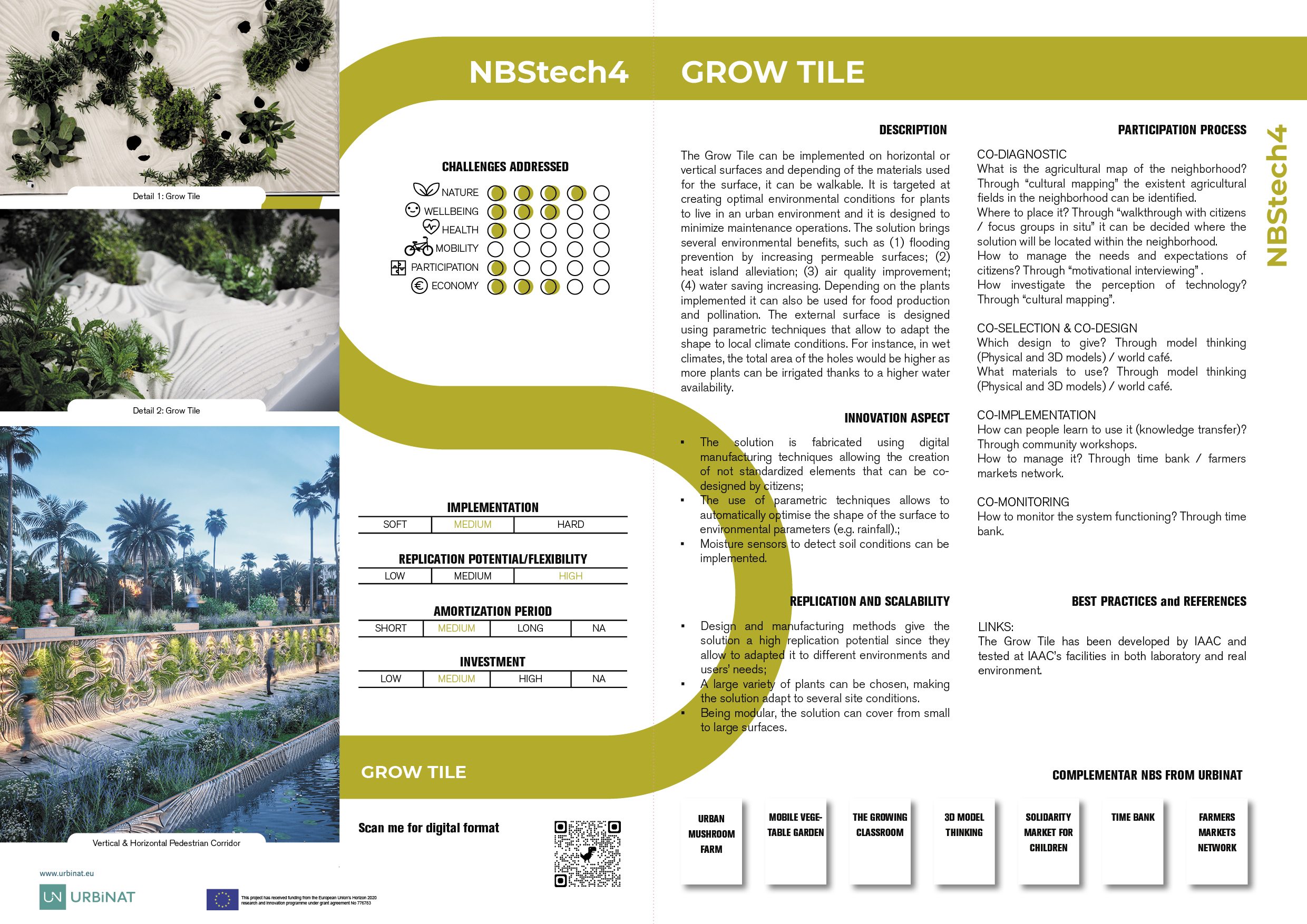
[PDF Download] Grow Tile
The Grow Tile can be implemented on horizontal or vertical surfaces and depending of the materials used for the surface, it can be walkable. It is targeted at creating optimal environmental conditions for plants to live in an urban environment and it is designed to minimize maintenance operations. The solution brings several environmental benefits, such as (1) flooding prevention by increasing permeable surfaces; (2) heat island alleviation; (3) air quality improvement; (4) water saving increasing. Depending on the plants implemented it can also be used for food production and pollination. The external surface is designed using parametric techniques that allow to adapt the shape to local climate conditions. For instance, in wet climates, the total area of the holes would be higher as more plants can be irrigated thanks to a higher water availability.
INNOVATION ASPECT
• The solution is fabricated using digital manufacturing techniques allowing the creation of not standardized elements that can be codesigned by citizens;
• The use of parametric techniques allows to automatically optimise the shape of the surface to environmental parameters (e.g. rainfall).;
• Moisture sensors to detect soil conditions can be implemented.
REPLICATION AND SCALABILITY
• Design and manufacturing methods give the solution a high replication potential since they allow to adapted it to different environments and users’ needs;
• A large variety of plants can be chosen, making the solution adapt to several site conditions.
• Being modular, the solution can cover from small to large surfaces.
PARTICIPATION PROCESS

-
1
CO-DIAGNOSTIC
What is the agricultural map of the neighborhood? Through “cultural mapping” the existent agricultural fields in the neighborhood can be identified. Where to place it? Through “walkthrough with citizens / focus groups in situ” it can be decided where the solution will be located within the neighborhood. How to manage the needs and expectations of citizens? Through “motivational interviewing”. How investigate the perception of technology? Through “cultural mapping”.
-
2
CO-SELECTION & CO-DESIGN
Which design to give? Through model thinking (Physical and 3D models) / world café.
-
3
CO-IMPLEMENTATION
How can people learn to use it (knowledge transfer)? Through community workshops. How to manage it? Through time bank / farmers markets network.
-
4
CO-MONITORING
How to monitor the system functioning? Through time bank.
BEST PRACTICES & REFERENCES
LINKS:
The Grow Tile has been developed by IAAC and tested at IAAC’s facilities in both laboratory and real environment.


